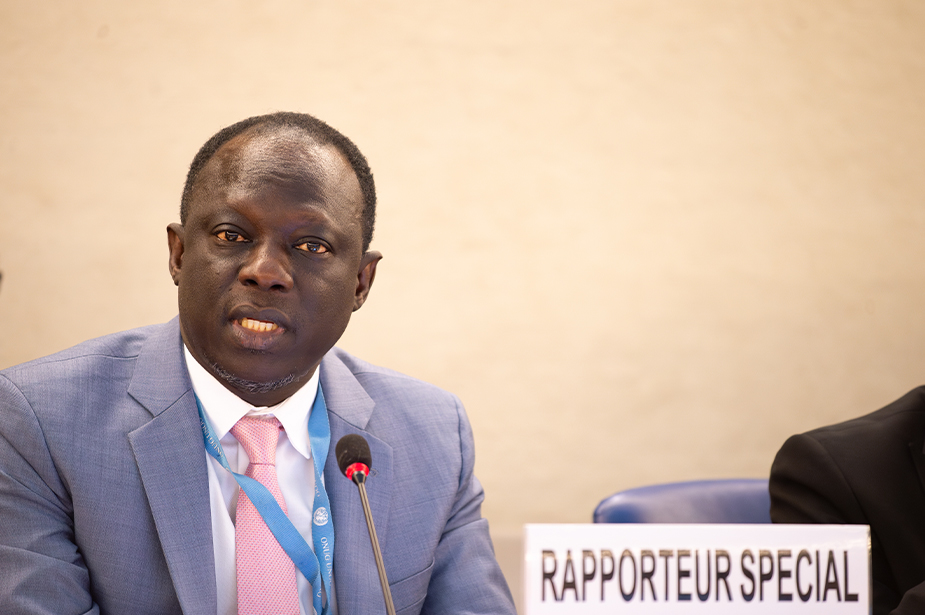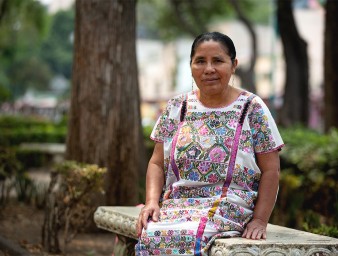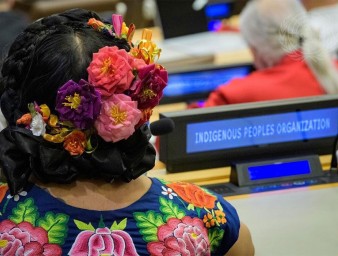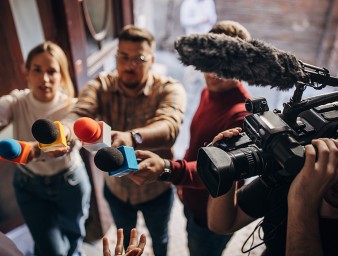Giving law enforcement valuable tools to protect peaceful protests
12 April 2024

In April 2018, Clément Voule, a national of Togo, was appointed as United Nations Special Rapporteur on the rights to freedom of peaceful assembly and association. During the 55th session of the Human Rights Council, he launched a Model Protocol for Law Enforcement Officials to Promote and Protect Human Rights in the Context of Peaceful Protests, which is part of a technical and practical toolkit developed by the Special Rapporteur in collaboration with the United Nations Office on Drugs and Crime and UN Human Rights. Before he departs his mandate at the end of April, Voule shares his views on peaceful protests and the launch.
Why are peaceful protests a human right?
A peaceful protest is a democratic means that is at the disposal of individuals and communities to express their grievances, for people to convene their concerns to authorities, or for leaders to find peaceful solutions. And, this democratic means is part of the right to peaceful assembly, which is protected under Article 21 of the International Covenant on Civil and Political Rights.
However, we have seen that around the world, in most of the cases, when people come to the street to exercise these rights, whether it is to ask for better education, to ask for water, to ask for better sanitation, or in general to defend their human rights, governments often consider this as a threat or as an issue of public order or security, not as an exercise of human rights.
Why should the right to peaceful protest be protected?
In any society, people want to be able to express publicly their views, to convey their happiness, or their concerns. And it is especially important for marginalised communities to change their reality by freely and safely convening their messages and their concerns and participating in the decision-making processes to ensure a better future.
Also, I think it’s important for the whole country because in some cases people will say, “oh, I don’t know why people are protesting. I need to go to my job; I will be late.” But to live in a democracy we need to be tolerant, we need to accept certain level of disturbances. The right to peaceful protest is also important for people to know what is going on in society. Sometimes this is the only means that people have to make their voices heard and to try finding solutions to underlying issues, and to work towards a better life for all.
Why is this toolkit relevant?
In all societies, law enforcement has the duty to facilitate the enjoyment of the right to peaceful assembly, which also includes peaceful protests as a form of an assembly. This toolkit helps law enforcement officials better understand this right and their obligations to facilitate protests and protect and promote human rights in the context of protest, and to foster accountability.
And it is important for citizens to know that when they come out to the streets to exercise these fundamental rights, they are not doing anything wrong, and they should not be criminalised, punished or killed for doing so. Law enforcement should not use violence and they should not presume that a protest will turn violent. Law enforcement should be prepared to ensure they effectively facilitate, enable and protect peaceful protesters. To this end, the toolkit encourages law enforcement to seek peaceful solutions when dealing with peaceful protests. Doing so will contribute to the advancement of peaceful and democratic societies.

Clément Voule, United Nations Special Rapporteur on the Rights to Freedom of Peaceful Assembly and of Association presents his latest report to the Human Rights Council during its 55th session. © OHCHR/Irina Popa
“
Every year, if you look around the world and according to the statistics gathered by my mandate, hundreds of thousands of people are killed or injured around the world just for exercising their right to peaceful protest.
“
Clément Voule, United Nations Special Rapporteur on the Rights to Freedom of Peaceful Assembly and of Association
These attacks against peaceful protesters are unacceptable and I want to reiterate that this situation must change. If you look at many countries today that are going through crises or even conflict or war, it often starts with a repression of the peaceful protest, the repression of some communities that are trying to express their views and grievances.
This toolkit talks about what law enforcement should be doing before, during and after the protest: what type of negotiation they should engage in with participants, and with the organisers of the protest. The toolkit clearly outlines that law enforcement should not use violence against those who are coming on the street to express peacefully their view. Instead, the toolkit aims at encouraging law enforcement to use techniques of de-escalation and negotiation and ensure there is an enabling environment for people to exercise this right, where accountability for violations is ensured.
What can be a roadblock for implementing the protocol?
The main challenge for the implementation is the political will. We need political will and effective actions to ensure an enabling environment for the exercise of the right to peaceful assembly. But we also witnessed during six consultations around the world that in many cases law enforcement does not have a proper protocol to guide them to ensure the facilitation of assemblies, even though there is active demand for such guidance on behalf of law enforcement in almost all parts of the world. The toolkit aims to fill this gap by providing clear guidance, prioritising training and capacity building for law enforcement to be better prepared to understand what they should do to protect the human rights of the communities they are serving.



